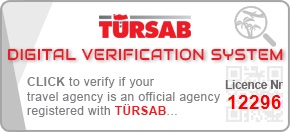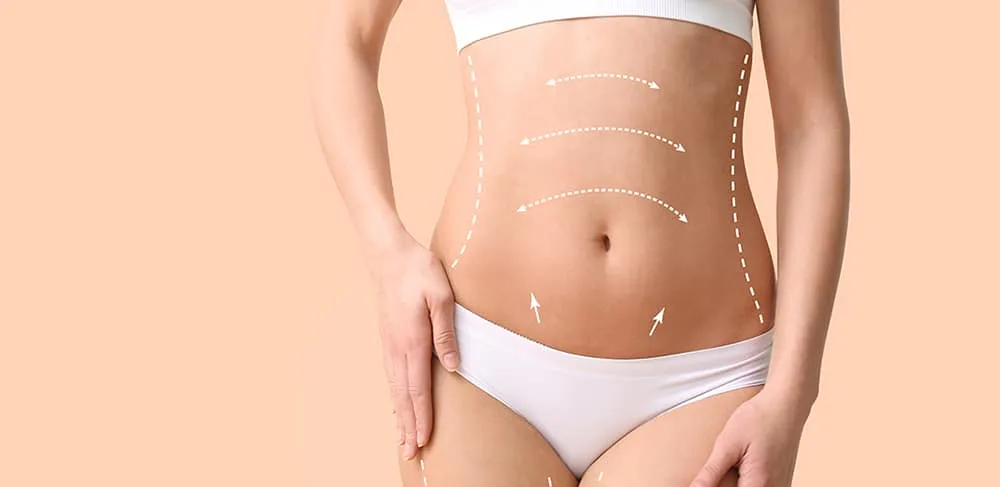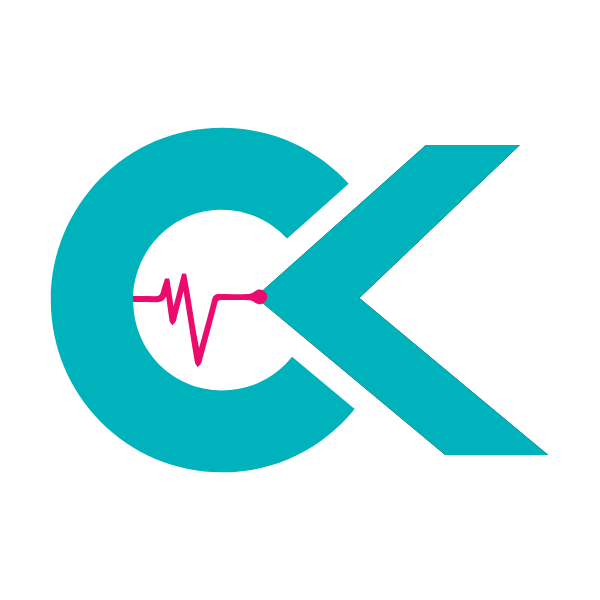Undergoing an extended tummy tuck, clinically known as extended abdominoplasty, is a significant decision that promises transformative results for individuals dealing with excess skin and fat extending to the hips and flanks. While the surgical procedure itself is meticulously planned and executed, the subsequent recovery period is equally critical for achieving the desired aesthetic outcome and ensuring patient safety. A comprehensive understanding of the extended tummy tuck recovery process is paramount for patients embarking on this journey. This guide provides an authoritative overview of what to expect, from immediate post-operative care to long-term healing, empowering patients with the knowledge to navigate their recovery effectively and efficiently. Patients from the UK and beyond often consider seeking such procedures abroad, attracted by the combination of high-quality care and competitive pricing. For those exploring their options for a Tummy Tuck in Turkey, understanding the recovery commitment is essential for proper planning.
Table of Contents
Understanding Extended Tummy Tuck Surgery
An extended tummy tuck is a more extensive variation of the traditional abdominoplasty, designed for individuals who have significant skin laxity and excess fat not only across the abdomen but also along the sides of the torso, extending towards the back (flanks). This condition often results from massive weight loss, pregnancy, or the natural aging process, where the skin has lost its elasticity and muscle separation (diastasis recti) is pronounced.
What Differentiates an Extended Abdominoplasty?
The primary distinction lies in the incision. A standard tummy tuck typically involves a horizontal incision made between the hip bones, along with an incision around the navel. An extended tummy tuck, however, extends this horizontal incision further around the sides of the body, often reaching the back. This allows for the removal of more significant amounts of skin and fat from the flanks and lower back, creating a smoother, more contoured silhouette. Additionally, the procedure often includes comprehensive muscle repair and liposuction to optimize results.
Ideal Candidates for this Procedure
Ideal candidates are typically healthy non-smokers who are at a stable weight but struggle with loose skin and fat that extends beyond the abdominal area. They should have realistic expectations about the outcomes and the extended tummy tuck recovery process. It is crucial for patients to understand the longer scar and the commitment required for diligent post-operative care. This procedure is often a key component of a Mummy Makeover in Turkey, addressing significant body changes experienced post-pregnancy.
The Critical Phases of Extended Tummy Tuck Recovery
The recovery period following an extended abdominoplasty is a journey that requires patience, discipline, and adherence to medical advice. The extended tummy tuck recovery timeline can vary significantly among individuals, influenced by factors such as age, overall health, extent of surgery, and adherence to post-operative instructions. This section outlines the typical progression.
Immediate Post-Operative Period (First Week)
Upon waking from anesthesia, patients will experience discomfort, swelling, and bruising. Pain medication will be administered to manage this. A compression garment will be applied immediately to reduce swelling and support the newly contoured abdomen. Drainage tubes will likely be in place to collect excess fluid, a crucial step in preventing seroma formation. Movement will be restricted, and walking with a slight stoop is common to avoid tension on the incision. Rest is paramount during this phase.
Weeks 2-4: Early Healing and Activity Restrictions
During this period, drains are typically removed, and discomfort gradually subsides. Patients are usually advised to continue wearing the compression garment diligently. Light walking is encouraged to promote circulation and prevent blood clots, but strenuous activities, heavy lifting, and bending should be strictly avoided. Swelling may persist, particularly towards the end of the day. The incision site will begin to heal, though some redness and tenderness are normal. Maintaining proper hygiene of the incision is critical to prevent infection.
Months 1-3: Progressive Healing and Return to Routine
As the weeks progress, patients will notice a significant reduction in swelling and an improvement in mobility. Most individuals can gradually return to light daily activities, including work (depending on its physical demands). Moderate exercise, such as brisk walking, can typically be resumed around 6-8 weeks, but high-impact activities should still be avoided. The compression garment may still be recommended, especially during physical activity. The final contours begin to emerge, though subtle swelling can linger.
Months 3-12: Full Resolution and Scar Maturation
This is the long-term phase where the body continues to heal internally, and scars mature. Swelling should have largely resolved, revealing the final results of the surgery. Scars will gradually fade and flatten, although they will never completely disappear. Continued scar management techniques are recommended. Patients can typically resume all normal physical activities, including strenuous exercise. The full aesthetic benefits of the extended tummy tuck are usually evident by the 6-12 month mark, with ongoing improvements in scar appearance.
Managing Pain and Discomfort
Effective pain management is central to a smooth recovery and significantly impacts patient comfort and compliance with post-operative instructions.
Pharmaceutical Approaches
Post-surgical pain is typically managed with a combination of prescribed opioid pain relievers for the initial acute phase, often supplemented with non-opioid medications like NSAIDs (non-steroidal anti-inflammatory drugs) or acetaminophen. It is vital to take medications as directed, not to wait until pain becomes severe, and to transition from stronger medications to over-the-counter options as discomfort lessens. Patients should report any unmanaged pain to their surgeon promptly.
Non-Pharmaceutical Pain Relief
Adjunct therapies can greatly assist in pain and discomfort management. These include:
- Cold compresses: Applying cold packs to the surgical area can help reduce swelling and numb the area, providing temporary relief.
- Gentle movement: Light walking, as permitted by the surgeon, helps prevent stiffness and promotes circulation, which can alleviate discomfort.
- Proper positioning: Sleeping with the upper body elevated and knees bent can reduce tension on the abdominal incision.
- Relaxation techniques: Deep breathing exercises and mindfulness can help patients cope with pain and anxiety.
- Manual lymphatic drainage: Gentle massage techniques can help reduce post-operative swelling and improve fluid circulation. A study published in the *Journal of Plastic and Reconstructive Surgery* highlighted that early and consistent lymphatic drainage therapy post-abdominoplasty may significantly reduce post-operative edema and improve patient comfort, contributing to a quicker resolution of swelling and a more comfortable overall extended tummy tuck recovery experience.
Essential Post-Operative Care Strategies
Adhering to detailed post-operative care instructions is crucial for optimal healing and minimizing complications. The complexity of an extended tummy tuck recovery necessitates a diligent approach to aftercare.
Compression Garments: A Cornerstone of Healing
Compression garments play a vital role in recovery by reducing swelling, providing support to the healing tissues, and helping the skin conform to the new body contours. Patients are typically required to wear a high-quality surgical compression garment continuously for several weeks, followed by a period of wearing it primarily during the day. Proper fit is essential; it should be snug but not restrictive to the point of causing discomfort or impairing circulation. Consistent wear is one of the most important factors for achieving smooth, even results and managing swelling effectively.
Drain Care and Monitoring
Surgical drains are routinely placed during an extended tummy tuck to remove excess fluid that can accumulate under the skin. Patients will receive detailed instructions on how to empty and measure the output from these drains. It is critical to monitor the color and volume of the fluid and report any sudden changes, significant increases, or signs of infection (e.g., foul odor, pus) to the surgical team. Drains are usually removed when the fluid output decreases to a minimal level, typically within 1-2 weeks.
Scar Management Techniques
The extended nature of the surgery means a longer scar, making diligent scar management crucial. Once the incisions have fully closed and any stitches or staples are removed, patients can begin scar care. This often involves:
- Silicone sheets or gels: These are proven to improve scar appearance by keeping the area hydrated and applying gentle pressure.
- Regular massage: Gentle massage helps to soften and flatten the scar tissue.
- Sun protection: Protecting the scar from UV exposure is vital for at least a year, as sunlight can cause hyperpigmentation, making the scar more noticeable.
- Hydration: Keeping the skin around the scar well-moisturized can aid healing.
Nutrition and Hydration for Optimal Healing
A balanced diet rich in protein, vitamins (especially A and C), and minerals (like zinc) is essential to support the body’s healing processes. Protein is critical for tissue repair, while vitamins and minerals play key roles in immune function and collagen synthesis. Staying well-hydrated by drinking plenty of water helps flush out toxins and supports cell function. Avoiding processed foods, excessive sugar, and sodium can help minimize inflammation and swelling. Proper nutrition fuels your body through the demanding extended tummy tuck recovery.
Activity and Exercise: A Phased Return
Returning to physical activity must be gradual and guided by your surgeon.
- Week 1-2: Limited to light walking to promote circulation and prevent blood clots.
- Weeks 3-6: Gradually increase walking duration; avoid lifting anything heavier than a small bag of groceries. No strenuous activities.
- Weeks 6-12: Light cardiovascular exercise (e.g., stationary bike, elliptical) may be introduced, but core-engaging exercises and heavy lifting remain restricted.
- Months 3+: Most normal activities can be resumed, but listen to your body and avoid anything that causes pain or strain at the incision sites. Abdominal exercises should be slowly reintroduced under guidance.
Potential Complications and Their Management
While extended abdominoplasty is generally safe, understanding potential complications is part of an informed extended tummy tuck recovery.
Seroma and Hematoma
Seroma (fluid accumulation) and hematoma (blood collection) are two of the most common complications. While drains help prevent these, they can still occur. Small seromas may resolve on their own, but larger ones often require aspiration with a needle. Hematomas may require surgical drainage.
Infection
Infection, though rare, is a serious complication. Symptoms include increased pain, redness, warmth, swelling, pus, or fever. Prompt medical attention and antibiotics are necessary. Strict adherence to wound care instructions and maintaining hygiene are the best preventative measures.
Delayed Wound Healing and Skin Necrosis
Factors like smoking, poor nutrition, and underlying health conditions can impede wound healing. In severe cases, a portion of the skin may die (necrosis), requiring additional medical care or debridement. Patients must strictly avoid smoking before and after surgery to minimize this risk.
Numbness and Sensation Changes
It is common to experience temporary or, in some cases, permanent changes in sensation, including numbness, tingling, or hypersensitivity, across the abdominal area. This is due to nerve disruption during surgery. Sensation often gradually returns over several months to a year.
“Dog Ears” and Contour Irregularities
Sometimes, small folds of skin and fat, often referred to as “dog ears,” can appear at the ends of the incision lines. These are usually minor and can often be corrected with a localized revision procedure under local anesthesia if they do not resolve naturally. Contour irregularities or asymmetries can also occur, sometimes necessitating revision surgery for optimal aesthetic outcomes.
Psychological Aspects of Recovery
The physical demands of an extended tummy tuck recovery are significant, but the psychological aspects are equally important.
Managing Expectations
Patients should have realistic expectations regarding the recovery timeline, final appearance, and scar visibility. The initial results may be obscured by swelling and bruising, and the final aesthetic outcome takes many months to fully manifest. Understanding that the journey is gradual helps prevent disappointment.
Emotional Support
It is normal to experience a range of emotions during recovery, including frustration, anxiety, or even regret, especially in the early stages when discomfort and limited mobility are prominent. A strong support system from family and friends, combined with open communication with the surgical team, can be invaluable. Some patients find connecting with online support groups beneficial for sharing experiences and coping strategies.
Why Consider CK Health Turkey for Your Extended Tummy Tuck?
CK Health Turkey has established itself as a premier destination for international patients seeking high-quality cosmetic and medical procedures, including the extended tummy tuck. Our commitment to excellence, combined with an unparalleled patient experience, makes us a top choice for those considering medical travel, particularly from the United Kingdom.
World-Class Expertise and Facilities
Our affiliated surgeons are board-certified, highly experienced specialists in plastic and reconstructive surgery, with extensive expertise in performing complex procedures like extended abdominoplasty. We partner with state-of-the-art hospitals equipped with the latest technology, ensuring the highest standards of safety and care. Our facilities adhere to international benchmarks, providing a safe and sterile environment for all surgical interventions and the critical extended tummy tuck recovery phase.
Comprehensive Patient Support
At CK Health Turkey, we understand that undergoing surgery in a foreign country can be daunting. We provide end-to-end support, from initial consultation and personalized treatment planning to accommodation, transfers, and dedicated aftercare coordination. Our multilingual patient coordinators ensure clear communication and address every concern, making the entire process seamless and stress-free for our international clientele. We pride ourselves on offering a holistic approach, ensuring not only surgical success but also a comfortable and supported recovery journey.
Cost-Effectiveness Without Compromise
One of the most compelling reasons for patients from the UK to choose CK Health Turkey is the significant cost savings without any compromise on the quality of care. The lower operational costs in Turkey allow us to offer world-class medical services at a fraction of the price found in many Western countries. This affordability, combined with exceptional surgical outcomes and patient support, represents an outstanding value proposition for those seeking an extended tummy tuck.
| Service/Item | Turkey Price (GBP) | UK Price (GBP) |
|---|---|---|
| Extended Tummy Tuck | £4,500 – £6,000 | £8,000 – £12,000 |
| Standard Tummy Tuck | £3,500 – £5,000 | £6,000 – £9,000 |
| Liposuction (add-on) | £1,000 – £2,000 | £2,500 – £4,000 |
| Post-Op Garment | £50 – £100 | £100 – £200 |
| Consultations | Included | £100 – £300 |
We invite you to discover the CK Health Turkey difference. Contact us today for a personalized consultation and take the first step towards achieving your body contouring goals with confidence and peace of mind.
| Factor | Standard Tummy Tuck | Extended Tummy Tuck |
|---|---|---|
| Incision Length | Hip-to-hip | Extends to flanks/sides |
| Areas Treated | Abdomen | Abdomen, flanks, lower back |
| Skin Removal | Moderate | Significant |
| Muscle Repair | Common | Common, more extensive |
| Recovery Duration | 4-6 weeks (initial) | 6-8 weeks (initial) |
| Scar Visibility | Limited to abdomen | More extensive |
The journey through an extended tummy tuck recovery demands commitment, informed decision-making, and unwavering patience. From meticulous pre-operative planning to diligent post-operative care and long-term scar management, each step contributes to the ultimate success of the procedure. While the path may present challenges, the transformative results—a more contoured, confident physique—are well within reach for those who adhere to medical guidance. Choosing an experienced surgical team and a supportive clinic, such as CK Health Turkey, is paramount in navigating this process. Embrace the healing process with a positive mindset, and you will be well on your way to enjoying the full benefits of your extended abdominoplasty and its profound impact on your well-being. The diligent management of your extended tummy tuck recovery is not merely a phase but a critical investment in your future comfort and aesthetic satisfaction.
FAQs
How long does the extended tummy tuck recovery typically last?
The initial recovery period, where most discomfort and swelling subside, usually lasts 6-8 weeks. However, full healing, including scar maturation and resolution of subtle swelling, can take 6-12 months or even longer.
Can I speed up my recovery after an extended tummy tuck?
While you cannot significantly shorten the biological healing process, you can optimize it by strictly following your surgeon’s post-operative instructions, maintaining a healthy diet, staying hydrated, getting adequate rest, and avoiding strenuous activities and smoking.
When can I return to work after extended abdominoplasty?
This depends on the nature of your job. For sedentary jobs, patients typically return within 2-4 weeks. For physically demanding jobs, it may be 6-8 weeks or longer. Your surgeon will provide specific guidance based on your individual recovery progress.
How long do I need to wear a compression garment?
Typically, a compression garment is worn continuously for 4-6 weeks, followed by another 4-6 weeks primarily during the day or during physical activity. Adherence to this is crucial for reducing swelling and supporting your new contours.
Will I have drains after my extended tummy tuck?
Yes, it is standard practice to place surgical drains during an extended tummy tuck to prevent fluid accumulation (seroma). These are usually removed when the fluid output decreases significantly, typically within 1-2 weeks post-surgery.
How do I manage the scars from an extended tummy tuck?
Scar management begins once incisions are fully closed. Techniques include using silicone sheets or gels, gentle massage, and strict sun protection for at least a year. Your surgeon will advise on the best regimen for your individual case.
Is it normal to have numbness after the surgery?
Yes, it is very common to experience numbness, tingling, or altered sensation in the abdominal area after an extended tummy tuck due to nerve disruption. This can be temporary or, in some cases, partially permanent, but often improves over several months.



